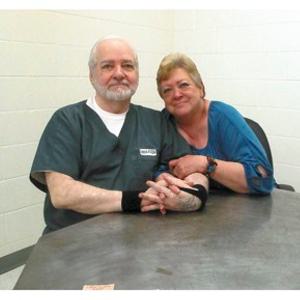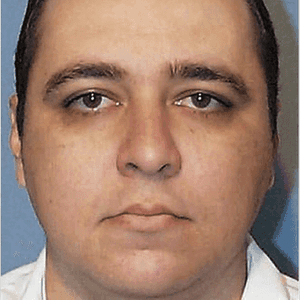
On February 6, 2024, the South Carolina Supreme Court heard oral arguments in Owens v. Stirling, a case in which death-sentenced prisoners challenged the state’s electrocution and firing squad execution methods as unconstitutional. A South Carolina trial court had previously held an extensive evidentiary hearing and issued an injunction against use of those methods based on the state’s constitutional prohibition against “cruel,” “unusual,” or “corporal” punishments. For almost 90 minutes the parties discussed the expert testimony and evidence considered by the district court, while also spending substantial time debating the state’s obligations to share information about lethal injection drugs.
The plaintiffs are Freddie Owens, Brad Sigmon, Gary Terry, and Richard Moore. Their suit targets the state’s 2021 execution protocol, which allows prisoners to choose between electrocution, firing squad, or lethal injection. The protocol designates electrocution as the default, making South Carolina the only state with electrocution as its primary method. South Carolina has not conducted an execution since 2011 due to alleged difficulties obtaining lethal injection drugs. The current challenge arose when the state claimed that lethal injection was unavailable and set execution dates by electrocution and firing squad under the new protocol. Trial court Judge Jocelyn Newman issued the injunction in September 2022, and the South Carolina Supreme Court ruled in January 2023 that the state must turn over information about its attempts to obtain lethal injection drugs in order to understand how the state deemed that method “unavailable.” The state has since announced, in September 2023, that it obtained pentobarbital for use in lethal injections.
The slight but important differences between the South Carolina Constitution and the United States Constitution play a key role in the litigation. While the U.S. Constitution forbids “cruel and unusual punishments,” the South Carolina Constitution goes further by stating that no “cruel, nor corporal, nor unusual punishment” shall be inflicted. Thus, while the U.S. Supreme Court may only strike down a punishment that is deemed both cruel and unusual, the South Carolina Supreme Court can strike down a punishment that meets any of the three categories. At the district court level, Judge Newman applied South Carolina’s more expansive prohibition to find the methods unconstitutional. At the Supreme Court, John Blume, attorney for the prisoners, argued that the district court had been correct, and that electrocution was “cruel” while use of the firing squad was both “corporal” and “unusual.”
Throughout the argument, state attorney William Grayson Lambert referred to legal challenges in other states and argued that prisoners would likely challenge any method of execution. When reminded by Chief Justice Donald W. Beatty (center in photo) that the plaintiffs had conceded the constitutionality of lethal injection in South Carolina, Mr. Lambert replied that prisoners in other states were challenging lethal injection, and suggested that prisoners would not be “satisfied” with any measure taken by the state. He twice quoted U.S. Supreme Court Justice Samuel Alito in arguing that the court had an interest in preventing “seemingly endless proceedings” in death penalty cases. This emphasis reflects a longstanding focus on procedural “finality” in capital cases, often at the expense of substantive claims—including innocence—that may not have been reviewed by courts in earlier proceedings due to issues such as state misconduct or ineffective assistance of counsel.
Firing Squad
The first half of the state’s allotted argument was dominated by discussion of whether the firing squad was an “unusual” method of execution. Mr. Lambert argued that the firing squad was not unusual because South Carolina and the nation had not “clearly moved away” from using it. He compared the firing squad to hanging, which he conceded was unconstitutional, and said that hanging had seen a long period of disuse and negative treatment in the courts.
However, multiple justices appeared skeptical of Mr. Lambert’s argument, emphasizing the statistics showing that the firing squad is the least used execution method in American history and has also experienced a long period of disuse. DPIC found that just three of 1578 executions in the modern era of the death penalty occurred by firing squad (0.2%), all in Utah. Chief Justice Beatty said that the firing squad had essentially seen a “fifty-year hiatus,” and that hanging had been used for “more than a hundred years” before it was discarded.
The discussion also concerned whether the firing squad was a “corporal” punishment, which has been defined as a punishment that mutilates the body. The last firing squad execution occurred in 2010 in Utah after Ronnie Lee Gardner elected that method; witnesses reported he moved after he was shot. Judge Newman viewed photos of Mr. Gardner’s autopsy and concluded in her 2022 order that his body “has been, by any objective measure, mutilated.” At oral argument, Justice John W. Kittredge (far left) referred to Mr. Gardner’s execution as a “horrific episode.” “The pictures are bloody, but that doesn’t mean the execution was botched,” Mr. Lambert replied, and later repeated, “it is bloody, that’s the result of a gunshot.” Justice Kittredge asked whether the fact that “the very protocol in South Carolina anticipates a second volley of bullets” meant that the state anticipated extended suffering. “The protocol is written with redundancies because all protocols are,” replied Mr. Lambert.
Electrocution
In debating the constitutionality of electrocution, both Mr. Lambert and Mr. Blume referred to expert testimony at the trial level regarding the effect of an electric current on the human body. Mr. Blume argued that the experts showed that the human skull resists electricity, meaning that the current may not be powerful enough to enter the brain and cause immediate death, instead causing severe and prolonged suffering. He pointed to evidence that the agricultural industry only uses electrocution to stun animals because electrocution is not deemed powerful or quick enough to kill. Mr. Lambert argued that the experts could not conclusively determine the power of the electric current entering the skull and as a result failed to meet their burden.
Mr. Blume emphasized that both the Georgia and Nebraska Supreme Courts outlawed electrocution as cruel and unusual punishment. In Dawson v. State (Ga. 2001), Georgia’s high court noted expert testimony that “the brain is shielded from much of the electricity by the skull,” and “the alternating current used in electrocutions could repetitively activate the brain, causing the perception of excruciating pain and a sense of extreme horror.” In State v. Mata (Neb. 2008), Nebraska’s justices found a “pattern of prisoners suffering unnecessary pain” under electrocution, and highlighted the risk that prisoners could break bones due to the force of contractions, experience severe burns, and even catch on fire. Mr. Lambert argued that the South Carolina Supreme Court should reject the use of these cases in part because “they were decided when everyone assumed lethal injection was available” and “when everyone assumed lethal injection was less painful.”
Secrecy
Though not a central issue of the lawsuit at the trial court, the parties and justices devoted significant time at oral argument to South Carolina’s “shield” law, which prohibits the disclosure of execution-related information. The state defended against revealing any information about lethal injection drugs, arguing that the details would give prisoners “puzzle pieces” to deduce the origins of the drugs and make it more difficult for the South Carolina Department of Corrections to obtain the drugs in the future. Mr. Lambert said that the lawsuit did not concern the secrecy statute directly, but acknowledged that the court could decide its constitutionality if necessary to reach its conclusion. On behalf of the prisoners, Mr. Blume argued in favor of “minimum disclosures” to ensure the drugs’ “potency, purity, and stability,” and suggested testing and transparency policies similar to those in other states and the federal government. He did not take a position on the constitutionality of the shield law.
In a lengthy exchange with Justice John Cannon Few (far right), Mr. Lambert conceded that the state did not test its lethal injection drugs. Justice Few responded with concern, musing that “surely the state would verify that this is the right drug to use” in a time when stories have emerged of states obtaining execution drugs from sketchy or illegal sources. Mr. Lambert replied by saying that the court had never required the state to prove the drugs’ provenance, but Justice Few noted that “the atmosphere has changed since 1995” and there are now serious doubts about the quality and sources of lethal injection drugs. Chief Justice Beatty asked whether Mr. Lambert would object to independent testing, and Mr. Lambert said yes, arguing that independent testing would draw additional people under the umbrella of the shield law and could “alter the shelf-life” of the drugs.
Mr. Blume argued that “potency, purity, and stability” were reasonable requests with high stakes for the prisoner. He emphasized that both Texas, the state conducting the most executions, and the federal government under the Trump administration provided the certifications the lawsuit recommended as to content and quality of the drugs. He also argued that none of this information is barred by the statute, contrary to Mr. Lambert’s claims, as the statute focuses on identifying information about the people participating in executions. When asked for the basis of a legal right to this information, Mr. Blume cited the prisoners’ right to an execution that was not “cruel, nor corporal, nor unusual” under the state Constitution, as well as their right to due process under the Fourteenth Amendment of the U.S. Constitution.
Sources
Jeffrey Collins, South Carolina wants to restart executions with firing squad, electric chair and lethal injection, Associated Press, February 6, 2024; Baze v. Rees (2008); State v. Mata (Neb. 2008); Dawson v. State (Ga. 2001); Donald P. Baker, Flames Shoot From Convict At Execution, Washington Post, March 26, 1997; Malloy v. South Carolina (1915).
Methods of Execution
Mar 12, 2024

Three Largest Nitrogen Gas Manufacturers in the U.S. Prohibit Products from Use in Executions
Methods of Execution
Feb 29, 2024

Idaho Halts First Lethal Injection Execution in 12 Years After Failure to Establish I.V. Lines
Methods of Execution
Jan 11, 2024


